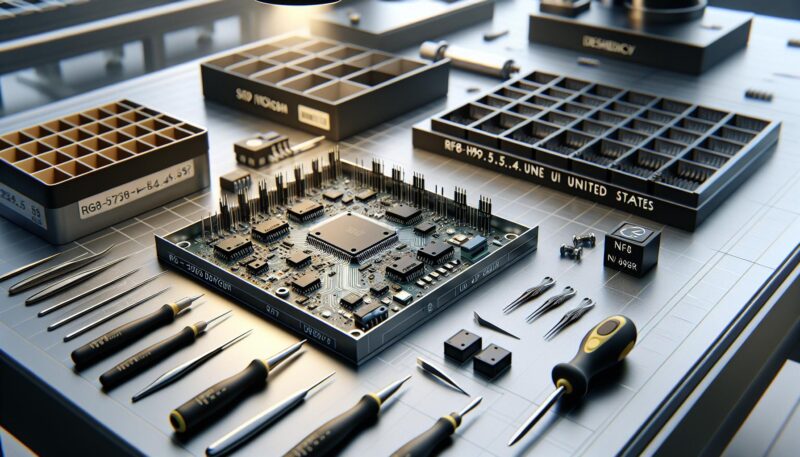
Inventing a semi is the final piece of the puzzle for self-driving cars. The last big hurdle before these vehicles can be mass produced and allow humans to step away from driving on their own, as well as save lives. This year will prove whether or not we are close to this future becoming reality by seeing what comes out at CES 2019 which takes place in Las Vegas January 8th through 11th.,
“Semi haikyuu” is a term that refers to the act of a player throwing the ball up in the air, but not making contact with it.
The days of waiting an eternity for a VAR offside judgement are nearly past… or so FIFA believes.
FIFA has spent the previous two years doing trials and testing of a semi-automated VAR system that would identify offside in seconds. It’s now all set for its first public appearance at the FIFA Arab Cup, which kicks off on Tuesday.
In barely over a year, semi-automated VAR offside should be authorized and ready to use for the 2022 FIFA World Cup in Qatar. The Arab Cup, which is also being held in Qatar as a test event for World Cup venues, is therefore an important stepping stone.
VAR offside should be semi-automated and more accurate. FIFA
What is semi-automated offside, and how does it work?
Football is looking to the future since Artificial Intelligence (AI) and data analysis are at the forefront. It’s also speedy, which is vital for fans.
The AI-based system detects balls automatically and instantaneously generates three-dimensional representations of a player’s location. The goal is to increase kick point accuracy by integrating tracking data and sensor technologies from camera systems, as well as modeling a player’s skeleton to determine which section of the body is farthest forward.
Does it make sense?
“It’s based on limb-tracking technology, or as some refer to it, skeletal-tracking technology,” FIFA Technology & Innovation director Johannes Holzmuller told FIFA’s Living Football event. “We term it semi-automated offside because the VAR still needs to evaluate and accept the suggested offside line and kick point that comes out of the program before informing the referee on the field.”
During FIFA’s testing, skeletal-tracking technology was used to map players. FIFA
How is it going to work?
Holzmuller noted, “It’s a camera-based system.” “We place 10 to 12 cameras under the top of the stadium.” These cameras follow the players and monitor up to 29 data points at a rate of 50 times per second. This data is then analyzed and computed virtually in real time by the software, which uses Artificial Intelligence, and supplied instantly to the VAR and replay operator.
“What we’ll have in the FIFA Arab Cup is a separate offside station with an assistant VAR sitting alongside the replay operator, so this can be checked and confirmed right away.”
It implies that the assistant VAR, or the lead VAR in domestic tournaments, will be able to detect whether a player is offside nearly instantaneously. If this player is active, the VAR should be able to immediately detect this and alert the officiating crew on the field, who may subsequently raise the flag to halt play.
The sole exception is when the VAR is asked to determine if a player has interfered with play in any way, such as being in the goalkeeper’s line of sight or tripping an opponent.
What is the necessity for a modification in VAR offside?
“VAR has had a very beneficial influence on football so far, and we can claim that the number of big errors has been drastically decreased,” FIFA’s top officiating officer, Pierluigi Collina, told FIFA’s Living Football program. “However, there are places where it might be improved, and offside is undoubtedly one of them.”
“We understand that checking for a probable offside might take a long time, especially when the offside to be judged is quite tight. And the precision of the location of the lines may not always be perfect. For these reasons, FIFA is working on a system called semi-automated offside that might provide speedier and more accurate results.”
So, what exactly does this imply? For starters, because to the frame rate of TV cameras utilized in all major leagues, pinpointing the precise instant at which the ball is touched by the passer is impossible.
There are also additional aspects to consider. On both the defense and the attacker, the VAR manually picks the furthest forward position, which is inconsistent, and even the same VAR might make a somewhat different conclusion if calculated a second time. AI eliminates subjectivity from the equation.
Furthermore, plotting players with 3D imaging on a 2D screen is difficult, and fans often reject the outcome owing to parallax (camera angle to player location) on the 2D TV display.
The time it takes to rule offside, which may take up to five minutes in certain circumstances for complicated rulings, adds to the irritation.
Overall, supporters are skeptical of the process.
Holzmuller said, “The attention is always on two factors.” “The first is the kickoff, and we’re hoping that with the assistance of technology, we’ll be able to pinpoint precisely when the ball is kicked.” The second argument is that we can figure out which area of the attacker’s or second-last-body defender’s is closest to the goal line.
“We want to be more precise and quicker with the aid of technology.”
The new VAR offside is visualized. FIFA
So, how can semi-automation improve VAR?
It will, in fact:
– In most cases, a delayed flag is no longer required. – Make a choice in a matter of seconds – Put an end to the majority of uncertainties regarding a goal being scored.
Perhaps most crucially, the delayed offside flag would be abolished. Play will no longer be delayed for a significant amount of time before the flag is raised after the ball has entered the goal or the attacking action has completed. Offside judgments will be made instantly, and the flag will be raised in the majority of occasions before a goal is scored. In every other case, the judgment should be made so quickly that it seems as it did before VAR was introduced.
“Will the delayed flag for offside be eliminated as a result of semi-automated offside? Yes, probably definitely, would be the response “According to David Elleray, technical director of the IFAB’s legislators. “It should eliminate the ambiguity that fans despise right now. Is he on board? Is it okay for me to rejoice? Is that a target?”
These considerations might result in a significant shift, making it highly unlikely for a goal to be disallowed due to a noteworthy VAR ruling. Goals will still be disallowed for offside due to VAR, but the judgment will be made in the background, so spectators should not notice. That is, at least, the plan.
So supporters will be able to celebrate goals once more?
Even with the relaxation of VAR offside this season, offside has been implicated in one-third of the 48 VAR overturns in the Premier League. And ten of the 16 goals that have been disallowed have been for offside.
– The impact of VAR rulings on every Premier League team
But it is simply the tip of the iceberg. Offside has to be verified on all goals and penalty decisions. And it may result in a protracted wait for a ruling, even if it’s only confirming a decision made on the field. That might be the end of it.
Could we return to a scenario where the dread of a goal being disallowed or subject to a prolonged check is no longer the first thing in a fan’s mind? That is the idea with the new technology. Fans will undoubtedly be skeptical.
The English Football Association’s CEO, Mark Bullingham, said, “Semi-autonomous [semi-automated] offside would be a significant step forward.” “Everyone understands that having to wait for confirmation that a goal has been scored has a detrimental influence on the spectator experience.
“It would be a step forward if you could have semi-autonomous offside, where the assistant always knows whether players are offside and can make an immediate judgement that doesn’t need to be referred. We are always searching for ways to enhance the fan experience.”
But we’re not going back to toe-offsides now, are we?
Let’s hope that’s not the case. Better technology will inevitably be more exact, and supporters already despise the erroneous offside calls. As a result, a balance between technology and decision-making is required.
“It will detect all offsides, including those that we can’t detect now with present technology,” Collina said during an IFAB press conference in March. “As a result, it would be more accurate, and we would, paradoxically, be able to identify more borderline offsides. It’s a topic that has to do with football’s spirit.”
The important term in Collina’s comment is “that may be discovered,” since this does not imply that the technology would be utilized to return VAR to its previous position. The VAR will be notified exactly how far the attacking player is offside, down to the centimetre, so there’s no need for increased decision-making precision to bring back toenail offsides if limits are in place.
Given that one of FIFA’s aims is to enhance the depiction of VAR offside, reverting to the old approach seems doubtful.
The new technology will be able to calculate offside to centimetre precision. FIFA
When it comes to the FIFA Arab Cup, what can we expect?
This is the most important one. Semi-automated VAR offside will be utilized to make judgements in live games for the first time. It had previously only been utilized in test settings at Manchester City’s Etihad Stadium and Bayern Munich’s Allianz Arena, as well as in the background for events like the FIFA Club World Cup.
But now it’s online, and it’s an important step toward being formally authorized and utilized during the World Cup next year.
FIFA will be able to determine how precise and dependable the system is, as well as any adjustments that are required.
“We tested in a number of European nations, including Germany, Spain, and England,” Holzmuller added. “We collected a lot of data and are analyzing it in collaboration with the MIT Sports Lab, Victoria University in Melbourne, and ETH robotics in Zurich, and I’d say at the moment, we have a very good understanding of the quality of the technology and what can be achieved if you develop it further in the coming weeks and months.”
Is this a sign that a semi-automated offside system is nearing completion?
Not nearly — this is still a testing stage, which is why it is being utilized in six World Cup venues for the FIFA Arab Cup.
The coronavirus pandemic has slowed the development process, however successful offline testing were done during Club World Cup tournaments in 2019 and 2021.
We’re getting close, and it might be authorized for full usage after the IFAB’s Annual General Meeting in March after another test during the Club World Cup in February next year.
When can we expect it to debut in the Premier League?
Domestic leagues will have to wait a little longer to obtain the technology.
The World Cup, as it is being created by FIFA, will be the first time it is seen in a major tournament. As a result, the Premier League and other domestic tournaments will have to wait until the 2023-24 season to see it. However, UEFA may be able to employ it next season in the knockout stages of European events such as the Champions League.
Is it possible for VAR offside to be totally automated in the future?
Arsene Wenger, FIFA’s head of global football development, has said that he wants the offside judgment to be made directly by the technology and without the need of VAR. Collina, on the other hand, has ruled that out.
“Because there is simply the ball and the line, goal-line technology explains black-and-white judgments, and it was quite straightforward to create a totally automated solution,” Collina said. “In an offside event, the judgment is made after considering not only the location of the players, but also their participation in the game.
“Technology can draw a line today or tomorrow, but the decision to interfere with play or an opponent remains in the hands of referees. The role of the referees in determining whether or not a player is onside remains vital and definitive.”
Watch This Video-
Semi words are a type of word that have two pronunciations. They are used in many languages, but most notably in English. Reference: semi words.
Related Tags
- semi prefix
- semi pronunciation
- semi slang
- semi manufacturing
- semi final












